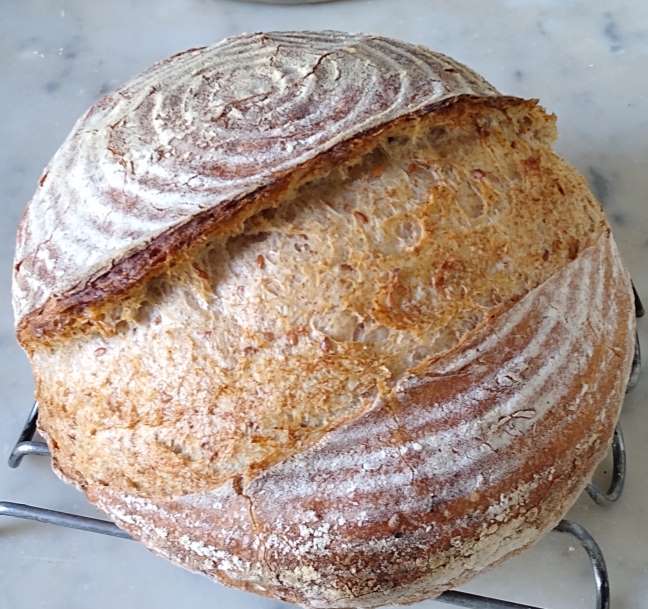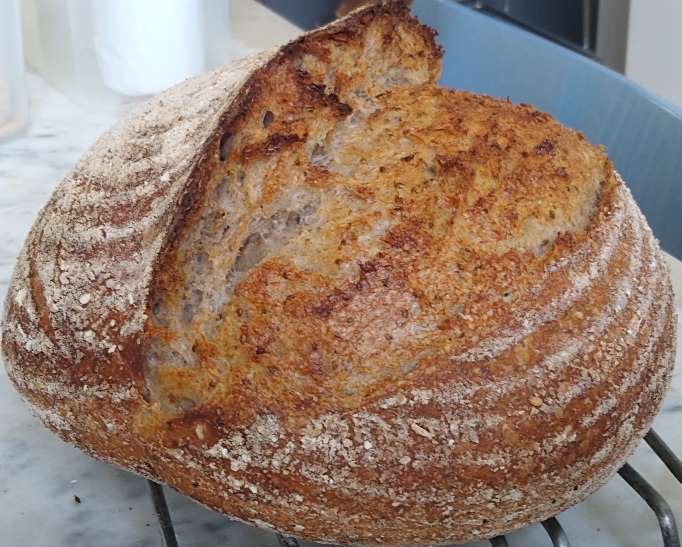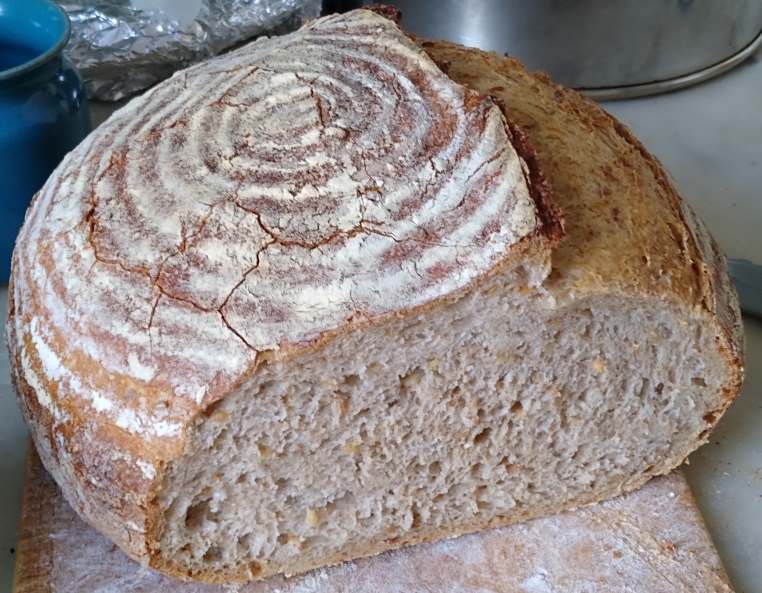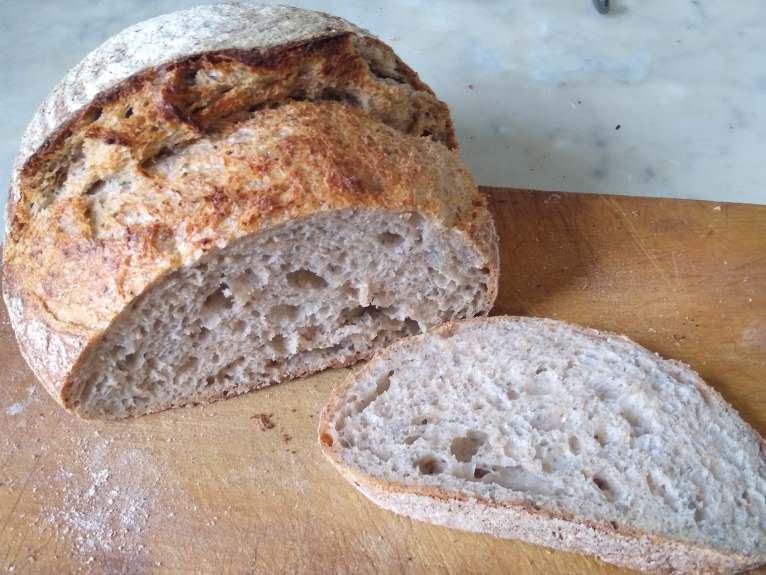Finally managed to make two vaguely comparable loaves, one using a 'shaggy' SD biga and the other, in effect, a SD poolish (not dissimilar to the liquid levain I was using in pre-biga bakes, minus the small regular feeds).
Both loaves were 30% wholegrain rye flour and 70% strong white wheat flour (total flour 400g). The biga loaf had 7.5% flaxseeds while the poolish loaf had 7.5% chia seeds (run out of flaxseeds). Salt was 1% in both and both had a 70% final hydration. 100% hydration SD starter at 10% of the total preferment flour was added to both the biga and the poolish, but the biga was 50% of the total flour while the poolish was 25% of the total flour. The biga was 50/50 strong white and wholegrain rye while the poolish was entirely wholegrain rye. The biga was left for 24h to ferment while the poolish took about 18h to fully rise and reach peak activity. Temperature around 19C for both.
My observations were as follows:
Bulk fermentation much faster with the biga than the poolish. Biga BF around 4h, poolish still not fully fermented after 6h, so had to leave it overnight in the fridge and make the next day.
Final dough more liquid and less strong/more sticky with the poolish than the biga. The biga dough was much easier to handle and shape. Both had 4xS&F and 2xlaminates.
Prooving was also faster with the biga (about 40min vs. 1h40min) and the biga loaf had risen significantly more than the poolish in the banneton.
Both were baked at 230C in a dutch oven, 25min lid on 10min lid off.


Oven spring was more with the biga than the poolish. (biga left, poolish right in the photos)
Crust thinner and more more crunchy with the biga. Color similar.


Crumb was pretty open with both, but slightly more uneven with the poolish. (biga left, poolish right in the photos)
Texture was more more light and airy with the biga than the poolish, which was slightly heavier, more moist and more chewy.
Flavor was more more nutty with the biga and slightly more sour with the poolish.
Both were similar in terms of staying fresh after the bake, being reasonably moist and nice to eat even the 3rd day after the bake.
Overall, my conclusion is that, for me, the biga has the edge in terms of convenience, ease of dough handling, speed of BF, dough structure, oven spring, crust, crumb, and texture. I also like the flavor, although the poolish is maybe more traditionally sourdoughy.
Some final thoughts about these methods with regard to spelt
As I was originally motivated to experiment with the 'shaggy' biga method as a way of baking free-form loaves with a high spelt flour content with good results, I also tried to make a 50% white spelt flour loaf using my previous liquid levain method , just to remember how it was and have a more recent comparator for my biga spelt bakes.
In the end, the loaf had to be converted to a focaccia type flatbread because it was not able to retain enough shape in the prooving stage to be made as a free-form loaf. While the final dough would tighten up nicely with the S&Fs and laminations and final forming, it would quickly loosen up again and spread out.
As far as I am concerned, to make a free-standing loaf with a high proportion of the white spelt flour I have, it is only possible to do it using this 'shaggy' biga technique. The ability to hold its form and the oven spring generated make this method ideal for baking with flour with the characteristics of white spelt.